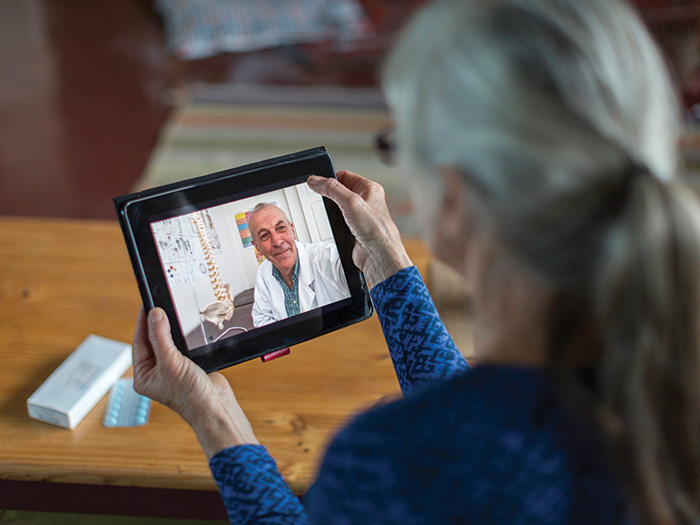Where Is Telehealth Headed? This National Comp Session Looked to Answer That Question

When medical providers and their patients were unable to meet in person, they had no other choice but to utilize the capabilities of telehealth. Now, telehealth is a central part of the health care system. But, where exactly does it fit?
A National Comp session titled, “We’re Doing Telehealth: Great, But Now What?” discussed how beneficial virtual health care options are and where the practice is going.
Michael Combs, president and CEO of CorVel Corporation, was joined by Jenny Novoa, senior director of risk management and safety, Gap Inc., and Lara Heal, director of managed care services, MEMIC, to discuss how they’ve seen the use of telehealth over the last 18 months.
While various facets of telehealth have been used for years, a 2006 study from the Mayo Clinic deemed the practice as a successful avenue of receiving health care, with the proper training, Combs noted.
Combs also discussed that the key to ensuring that telehealth remains a successful practice lies in three components: convenience, transparency, and personal service.
Breaking Through Misconceptions and Promising Data
There are several misconceptions surrounding telehealth that have made people reluctant to adopt it as a health care staple.
Many fear that a telehealth visit will not be as personal an experience as an in-person health care visit. Many also believe that engaging in a telehealth visit “is not a real visit and won’t check all the boxes,” as Heal said.
While these misconceptions produced roadblocks for the overall trajectory of telehealth, MEMIC found that initial telehealth calls between nurses and injured workers resulted in less workers’ compensation claims, as these telehealth visits were able to provide self-care and first aid recommendations virtually.
Other collected data that the presentation shared included:
• 88% reduction time away from work
• 60% reduction in medical spend
• 32% increase in improved satisfaction
The use of telehealth has also made the ability for an injured worker to consult with any type of specialist, no matter their locational proximity. Overall, telehealth has yielded better recoveries for lower the cost.
Telehealth Beyond the Pandemic
It’s evident that the use of telehealth produces favorable outcomes for injured workers. As providers gauge a world post-COVID, conversation about where telehealth will fit have become a hot topic of conversation.
For starters, there are several categories in which telehealth is likely to remain prominent, which include the use of at-home COVID-19 tests, physical therapy consulting and virtual functional restoration.
Additionally, the presentation discussed actual products and tools that have generated throughout the wide usage of telehealth. Combs talked about TytoHome, a device that allows patients to receive 24/7 care from medical providers who can obtain readily available patient care information, and the use of virtual reality for injured workers.
Despite the exciting forecast for telehealth, Heal urged attendees to “not lose connection with the workplace,” while adopting more virtual health care avenues.
All speakers expressed optimism for where telehealth is headed.
“It’s an existing space that will fundamentally change the way health care is delivered,” Combs said. &










